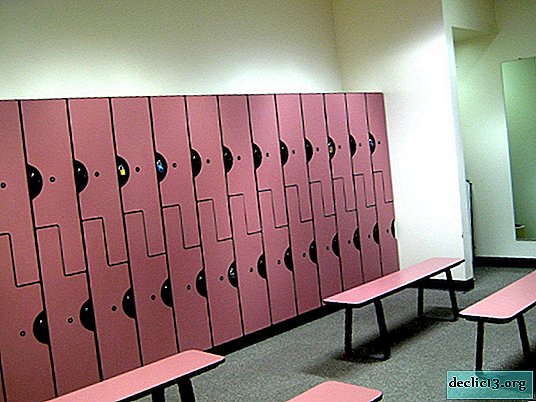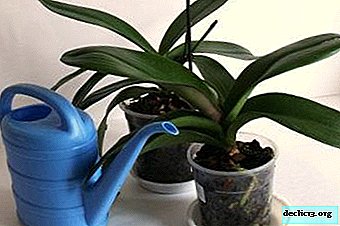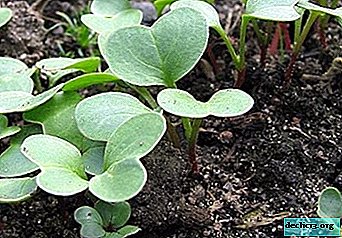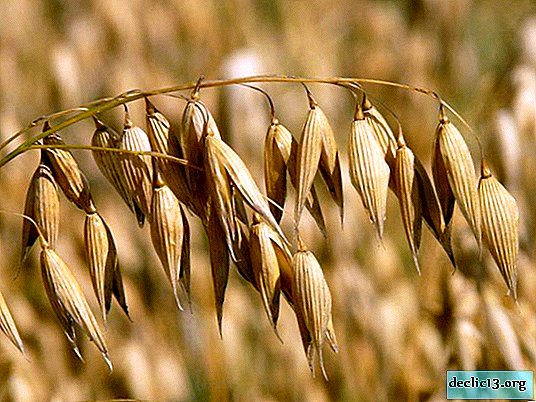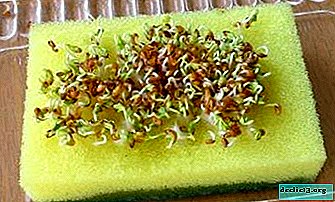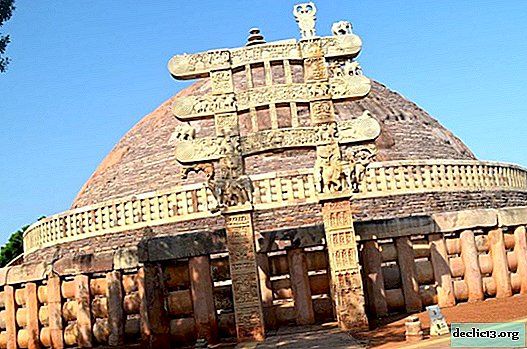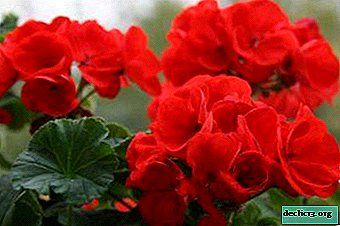Recommendations when and how to prune azaleas correctly. Step-by-step instruction

Azalea is one of the ornamental shrubs. Belongs to the heather family. In the wild, this plant is found in some parts of Europe, as well as Asia and North America.
It gained great popularity in the twentieth century, and it is grown in special nurseries and botanical gardens. It is in great demand because of the beautiful flowering. This plant is quite finicky, but only during flowering. In this article, we will show a photo of a beautifully “trimmed” rhododendron and tell you when and how to prune this plant correctly, whether it can be done after flowering, and what further care should be like at home.
What is pruning and why is a room rhododendron needed?
Pruning in plants is the main procedure. This is done so that the plant is healthy and does not hurt.
It is necessary to trim almost all types of plants that are fertile. Pruning for plants is very important, because it is thanks to it that you can control the size and growth of the plant. In addition, it becomes possible to correct and change the shape and the ability to influence the fruiting processes and qualities of already ripening fruits. There are several types of pruning.
Reference! It is not necessary to delete all branches, but only those that are stretched out quite a lot. Before you begin to prune the azalea, you should check with the lunar calendar.This plant can not only be cut, but also pinched. This is done so that the plant grows and develops better, in order to be able to adjust the shape of the azalea. This is also done so that the plant has many flower buds.
When is it recommended to carry out?
 To prune the plant correctly, it is necessary so that the azalea flowers grow and develop faster, as well as bloom well and intensively. Pruning should only be done after the plant has faded.
To prune the plant correctly, it is necessary so that the azalea flowers grow and develop faster, as well as bloom well and intensively. Pruning should only be done after the plant has faded.
Since azalea blooms from late autumn to late spring, the pruning procedure can be started from the beginning of June. In addition, at this time, the plant begins to rest.
In no case should you cut the plant during its flowering.
How to trim after flowering?
Cut off the azalea after its flowering, you need only long shoots of plantsif their length reaches the middle of the length of the remaining shoots and are densely growing. In addition, there is a need to trim weak or diseased shoots.
How many times a year is a procedure necessary?
Azalea should be trimmed once a year, as otherwise there is no need for pruning. It can be carried out before flowering only if some of the shoots start to hurt, grow poorly or if pests have appeared on them.
Step-by-step instruction
- Tool preparation. To prune this plant, a knife is used that will be very sharpened, but a pruner is best for this procedure. In any case, the knife or secateurs must be treated with a solution that contains from 70 to 90 percent alcohol.
- Selection of the cutting location. The place of cut of the plant can be anywhere, since you can adjust the shape to your taste. Therefore, there is not much difference.
- A slice of a plant part. First you need to remove the largest and largest branches. To make the plant beautiful, it is better to give it a shape in the form of a ball. Some gardeners remove shoots in the middle of the plant, in particular those that grow inside the bush.
Next, already sick and weak shoots of azalea are removed. To determine which shoots of the plant are weak and which are not, you need to look at the leaves of azalea. If there are no buds on the leaves, there should be two or one of them on healthy shoots. If there are a lot of kidneys on a leaf, then they will be an obstacle in obtaining other leaves of sunlight.
Large pruning will harm the plant itself and for a long time it will hurt. Also, with a strong pruning, the azalea will not be able to bloom, since it simply will not have the strength left for it.
Attention! Weak pruning of a plant will also greatly harm it. As a result of this pruning, azalea will release only a small amount of inflorescences. - Slice Processing. After pruning, it is imperative to decontaminate those places on the plant where the pruning procedure was performed. For disinfection, you can use a special paste for this, called "RANNET." It will help save the plant from pathogens. In addition, it will help in the rapid growth of leaves and twigs.
Possible errors and their prevention
Pruning in plants should be done at least once a year. There are twelve of the most common mistakes in pruning shrubs:
 Trimming only those branches that are broken or cracked. The main mistake here is that there is an opinion that if you remove only dry and cracked branches, then everything will be fine. But this is not so and it is necessary to delete the entire branch.
Trimming only those branches that are broken or cracked. The main mistake here is that there is an opinion that if you remove only dry and cracked branches, then everything will be fine. But this is not so and it is necessary to delete the entire branch.- Great sprawl of leaves. Stems and branches should not be allowed to grow, as this can cause problems with flowering, since the plant will not receive enough light.
In addition, due to the lack of sun, especially if it grows in the shade, pests and diseases can appear. Therefore, trimming too small can also harm the plant.
- Inaccurate and improper pruning on the kidney. This circumcision is the most difficult, since there is a high probability of making a mistake with the angle at which the cut will be made, with the cut height. You can accidentally hook a bark and barbs may form on it.
To carry out such pruning correctly, it is necessary to attach a knife from the base and to the top of the shoot from the side of the branch, which is opposite to the kidney. The cutting angle should not exceed 45 degrees.
So that the shoot does not dry out, in no case should you leave a stump.
- Poorly sharpened tool. As a rule, when trimming use tools such as: garden shears, pruners, saws and hacksaws. If they are poorly sharpened, then without cutting the bark to carry out the pruning process will simply not be possible. Such tools will leave injuries to plants, ragged and pointed scars. In addition, a person can cause injury to himself.
Poorly sharpened electric tools are especially dangerous.
- Trimming only those branches that are outside. If the plant has a too thick center, then as a result of this, problems such as: Disease and the appearance of plant pests may arise. In the center there should be only one or two main shoots, they will be quite enough. Now the plant will receive the amount of lighting and air it needs.
- A lot of competing shoots. Most often, the plant produces several main shoots at once. Thus, they begin to fight for vital resources and nutrients. Because of this, the entire plant weakens and may even die. Therefore, you should remove all these shoots and leave the most hardy. Others are best shortened by 35 percent.
Shoots that grow poorly or are diseased should be removed first.
- Damage to the kidneys.In order to not damage the kidneys when pruning the shoots in any way, you need to put the pruner at the right angle for the cut. First, the largest and longest branches are removed, and then the smallest ones.
Advice! First of all, you need to delete external, and then internal branches.
- Do not trim blind shoots. Blind shoots are those on which there are no flowers. Also, shoots must be removed to the lowest kidney.
- An untreated disease in a plant in time. If you do not remove old shoots when pruning, then diseases such as:
- rust;
- powdery mildew;
- spotting;
- mold.
- A large number of cropped flowering shoots.
- Unsuitable tool for trimming. If you need to cut 6 centimeters, then you should choose a saw, and if you need to remove only 2 centimeters, then you can use a pruner or garden shears.
- Untimely pruning of the plant. If you do not trim during, then the plant begins to dry, hurt and rot.
Photo
See what a room rhododendron looks like after a cropping procedure.



Aftercare at home
After the pruning procedure, care for azalea should continue the same as before.
For this procedure to be successful, all the features of this plant should be considered. To know them well, you need to carefully monitor your plant (you can find out about optimal conditions for home maintenance for azaleas here). Only in this case, for a long time, it will delight everyone around with its flowering.

 Trimming only those branches that are broken or cracked. The main mistake here is that there is an opinion that if you remove only dry and cracked branches, then everything will be fine. But this is not so and it is necessary to delete the entire branch.
Trimming only those branches that are broken or cracked. The main mistake here is that there is an opinion that if you remove only dry and cracked branches, then everything will be fine. But this is not so and it is necessary to delete the entire branch.



